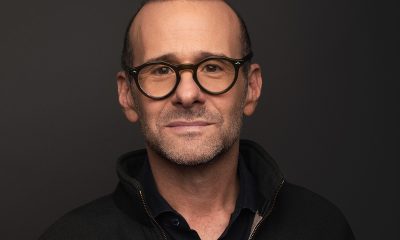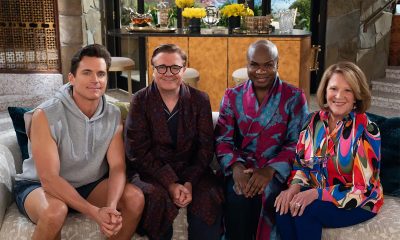Books
FALL ARTS 2019: BOOKS — ‘Revisiting Gilead’
‘Handmaid’s’ sequel, Van Ness and Rippon memoirs, posthumous Windsor bio, epic Sontag study and more among fall releases
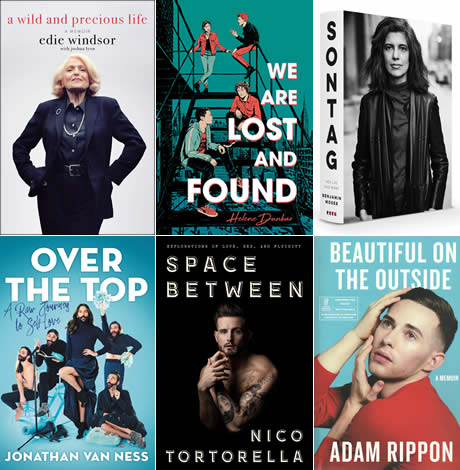
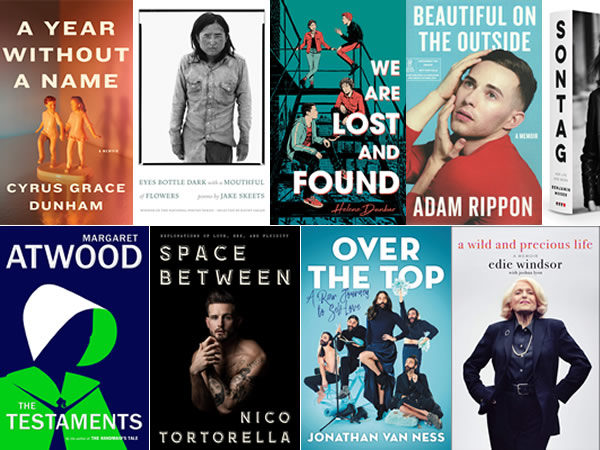
Inspirational “tell-alls” from athletes, activists and celebrities comprise many of the highly anticipated LGBT books slated for release in the coming months.
Kicking things off Sept. 3 was the release of former NFL player Ryan O’Callaghan’s memoir “My Life on the Line: How the NFL Damn Near Killed Me and Ended Up Saving My Life.” O’Callaghan’s work reveals the physical and emotional pain driving his addictions and suicidal thoughts while struggling as a closeted lineman for the New England Patriots and later the Kansas City Chiefs. His journey to self-acceptance is challenging as it detours through the hyper masculine world of professional football.
“We are Lost and Found” by Helene Dunbar is a coming-of-age story of a group of gay friends struggling to find their identities against the backdrop of the early 1980’s AIDS crisis. This YA novel provides an interesting way for youth of all backgrounds to explore a dark history that is rarely discussed. It was released Sept. 3.
Finding poetry in Drunktown, N.M., where men “only touch when they fuck in a backseat” is exactly what Jake Skeets had done with “Eyes Bottle Dark with a Mouthful of Flowers.” This debut collection finds beauty in brutal sex against an unforgiving landscape, yet also reveals unexpected love. Blending Navajo history with mining culture, Skeets’ work was selected as a winner of the 2018 National Poetry series. It was released Sept. 10.
Also released earlier this week was “The Testaments: the Sequel to the Handmaid’s Tale” by Margaret Atwood. Since the hit Hulu series captured fire, Atwood opted to finally write a follow-up to her acclaimed 1985 novel upon which the series is based. It picks up Offred’s story 15 years after the first book and weaves in strands of story from the show that weren’t in the original book.
“Sontag: Her Life and Work” by Benjamin Moser explores the writing, public radicalism and private thoughts of queer activist Susan Sontag, who wrote on feminism, homosexuality, drugs and fascism long before these issues went mainstream. She was there for the Cuban Revolution, the Vietnam War and the fall of the Berlin Wall. She covered it all while enduring intense relationships with glamorous lovers. This hefty work — it’s more than 700 pages — explores her public successes and private failures with an eye toward history that makes it a must read. Out Sept. 17.
Releasing the same day is “Space Between: Explorations of Love, Sex and Fluidity” by gender-fluid actor and model Nico Tortorella, who has had roles in “Scream 4,” “The Following” and “Younger.” It investigates love, sex, gender, addiction, family, fame and fluidity through their personal story and through the lens of their nonbinary identity. This memoir tells of their dark journey through pain and addiction toward sobriety and an unconventional marriage outside the gender binary. This title is available for pre-order on Amazon and Barnes and Noble.
“Queer Eye’s” Jonathan Van Ness’s memoir “Over the Top: A Raw Journey to Self-Love” is out Sept. 24.
Poet (and regular Blade contributor) Kathi Wolfe’s new book “Love and Kumquats: New and Selected Poems” will be published by BrickHouse Books in October. She will read selections at Busboys & Poets (14th and V) on Oct. 20.
“The Boy Who Listened to Paintings: A Memoir” by Benjamin Saltman Poetry Award winner Dean Kostos explores a point in his life when he was bullied to the brink of suicide and spent two years in the mental hospital where his mother had stayed. This work addresses mental illness in adolescents and celebrates the transformative power of art. Available Oct. 1.
Edie Windsor sued the U.S. government for the right to marry Thea Spyer, her partner of 40 years, and she won. “A Wild and Precious Life” is her posthumous memoir (she died in 2017) describing gay life in 1950s and ’60s New York and her longtime activism which opened the door to marriage equality. Available Oct. 8.
Selected by O Magazine, Marie Claire and others as one of the most anticipated books of fall 2019, “How We Fight For Our Lives” by Saeed Jones is a memoir about a young, black gay man coming of age in the South as he fights to carve out a place for himself in his family as well as his country. Fans of the film “Moonlight” will appreciate the honesty and vulnerability displayed in this work. Set for release Oct. 8.
Olympic medalist Adam Rippon’s memoir “Beautiful on the Outside” releases Oct. 15 and blends humor with history as he shares his journey through the world of competitive figure skating.
Deborah Levy’s “The Man Who Saw Everything” is novel that blurs the sexual and political binaries of masculine and feminine while telling the story of a narcissistic young historian who travels to Communist East Berlin in 1988 to publish a story favorable to the regime. It’s slated for Oct. 15.
“A Year Without A Name” by Cyrus Grace Dunham is a memoir detailing their painful evolution from lovable little girl, to gay woman to nonbinary queerness. Dunham lays bare their personal experience to help readers feel the anguish of binary limitations but also the profound freedom of acceptance without resolution. Dunham’s book also releases Oct. 15 and is available for pre-order
“Find Me,” the sequel to queer love story “Call Me By Your Name” by Andre Aciman, is slated for an Oct. 29 release and will let the world know what became of Elio, Oliver and Elio’s father, now divorced. The original novel inspired the 2017 film adaptation by Luca Guadagnino, which became a monster hit.
Trans novelist (and former D.C. resident) Alex Myers returns with his sophomore novel “Continental Divide,” about a trans protagonist heading West to Wyoming in search of a new life, in November.
Carmen Maria Machado, winner of the Lambda Lesbian Fiction Literary Award for her debut short story collection, “Her Body and Other Parties,” has a new memoir coming out Nov. 5 called “In the Dream House.” This work is an account of an abusive relationship with a charismatic but volatile woman. Throughout the memoir Machado struggles to make sense of what happened to her and how it shaped the person she would become. “Dream House” is available now on Amazon for pre-order.
“Becoming Eve: My Journey from Ultra-Orthodox Rabbi to Transgender Woman” is Abby Stein’s memoir about being raised in a Hasidic Jewish community in Brooklyn. But instead of becoming a leader of the next generation of Hasidic Jews, she leaves her home, her family, her way of life to become the person she was meant to be. Stein’s memoir releases Nov. 12.
The alternative historical drama “Legislating Love: the Everett Klippert Story” by Natalie Meisner blends fiction with queer history as it tells the story of Maxine, a Canadian social policy researcher, who discovers the story of Everett Klippert, the last Canadian man jailed for homosexuality. Fascinated, she interviews the people who knew him while navigating her own relationship with Tonya. Set for release Nov. 15.
Books
Embracing the chaos can be part of the fun
‘Make Sure You Die Screaming’ offers many twists and turns
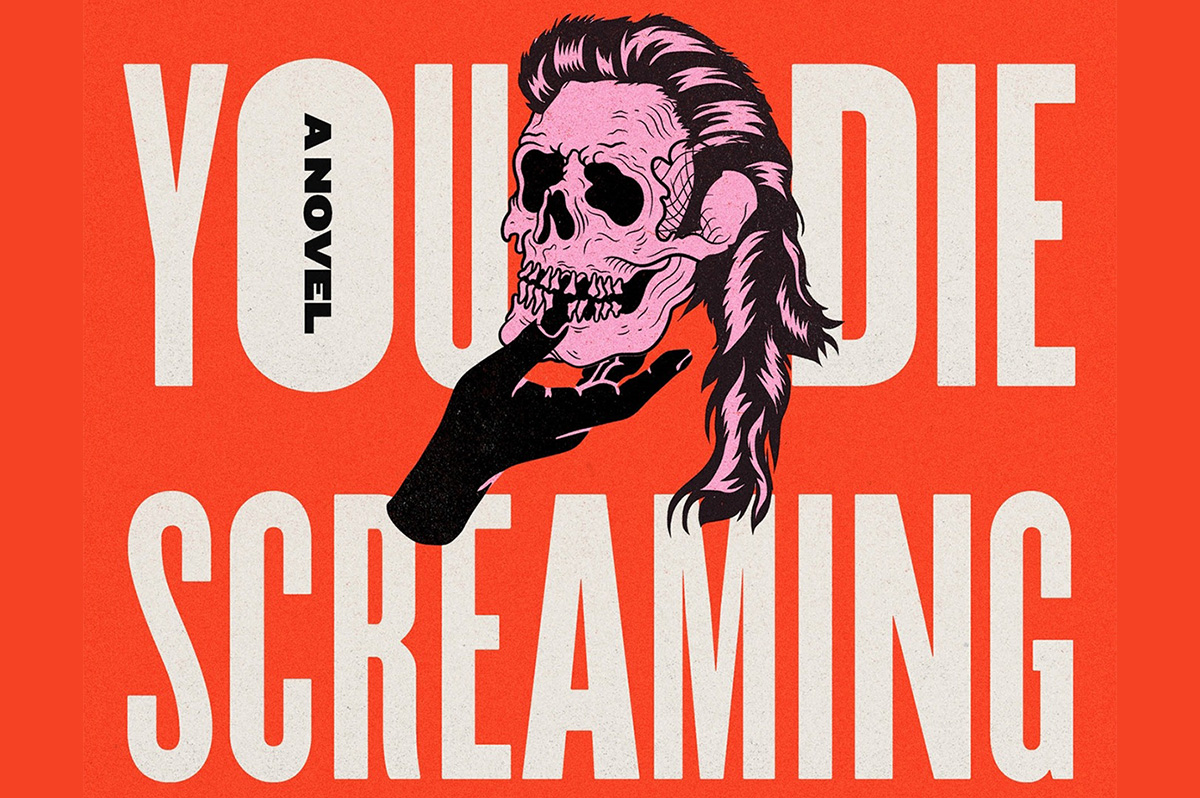
‘Make Sure You Die Screaming’
By Zee Carlstrom
c.2025, Random House
$28/304 pages
Sometimes, you just want to shut the door and forget what’s on the other side.
You could just wipe it from your memory, like it didn’t occur. Or create an alternate universe where bad things never happen to you and where, as in the new novel “Make Sure You Die Screaming” by Zee Carlstrom, you can pretend not to care.

Their mother called them “Holden,” but they’d stopped using that name and they hadn’t decided what to use now. What do you call an alcoholic, queer, pessimistic former ad executive who’s also “The World’s First Honest White Man,” although they no longer identify as a man? It’s a conundrum that they’ll have to figure out soon because a cop’s been following them almost since they left Chicago with Yivi, their psychic new best friend.
Until yesterday, they’d been sleeping on a futon in some lady’s basement, drinking whatever Yivi mixed, and trying not to think about Jenny. They killed Jenny, they’re sure of it. And that’s one reason why it’s prudent to freak out about the cop.
The other reason is that the car they’re driving was stolen from their ex-boyfriend who probably doesn’t know it’s gone yet.
This road trip wasn’t exactly well-planned. Their mother called, saying they were needed in Arkansas to find their father, who’d gone missing so, against their better judgment, they packed as much alcohol as Yivi could find and headed south. Their dad had always been unique, a cruel man, abusive, intractable; he suffered from PTSD, and probably another half-dozen acronyms, the doctors were never sure. They didn’t want to find him, but their mother called…
It was probably for the best; Yivi claimed that a drug dealer was chasing her, and leaving Chicago seemed like a good thing.
They wanted a drink more than anything. Except maybe not more than they wanted to escape thoughts of their old life, of Jenny and her death. And the more miles that passed, the closer they came to the end of the road.
If you think there’s a real possibility that “Make Sure You Die Screaming” might run off the rails a time or three, you’re right. It’s really out there, but not always in a bad way. Reading it, in fact, is like squatting down in a wet, stinky alley just after the trash collector has come: it’s filthy, dank, and profanity-filled. Then again, it’s also absurd and dark and philosophical, highly enjoyable but also satisfying and a little disturbing; Palahniuk-like but less metaphoric.
That’s a stew that works and author Zee Carlstrom stirs it well, with characters who are sardonic and witty while fighting the feeling that they’re unredeemable losers – which they’re not, and that becomes obvious.
You’ll see that all the way to one of the weirdest endings ever.
Readers who can withstand this book’s utter confusion by remembering that chaos is half the point will enjoy taking the road trip inside “Make Sure You Die Screaming.”
Just buckle up tight. Then shut the door, and read.
The Blade may receive commissions from qualifying purchases made via this post.
Books
Two new books on dining out LGBTQ-style
Visit nightclubs, hamburger joints, and a bathhouse that feeds customers

‘What is Queer Food? How We Served a Revolution’
By John Birdsall
c.2025, W.W. Norton
$29.99/304 pages
‘Dining Out: First Dates, Defiant Nights, and Last Call Disco Fries at America’s Gay Restaurants’
By Erik Piepenburg
c.2025, Grand Central
$30/352 pages
You thought a long time about who sits where.
Compatibility is key for a good dinner party, so place cards were the first consideration; you have at least one left-hander on your guest list, and you figured his comfort into your seating chart. You want the conversation to flow, which is music to your ears. And you did a good job but, as you’ll see with these two great books on dining LGBTQ-style, it’s sometimes not who sits where, but whose recipes were used.
When you first pick up “What is Queer Food?” by John Birdsall, you might miss the subtitle: “How We Served a Revolution.” It’s that second part that’s important.

Starting with a basic gay and lesbian history of America, Birdsall shows how influential and (in)famous 20th century queer folk set aside the cruelty and discrimination they received, in order to live their lives. They couldn’t speak about those things, he says, but they “sat down together” and they ate.
That suggested “a queer common purpose,” says Birdsall. “This is how who we are, dahling, This is how we feed our own. This is how we stay alive.”
Readers who love to cook, bake or entertain, collect cookbooks, or use a fork will want this book. Its stories are nicely served, they’re addicting, and they may send you in search of cookbooks you didn’t know existed.
Sometimes, though, you don’t want to be stuck in the kitchen, you want someone else to bring the grub. “Dining Out” by Erik Piepenburg is an often-nostalgic, lively look at LGBTQ-friendly places to grab a meal – both now and in the past.

In his introduction, Piepenburg admits that he’s a journalist, “not a historian or an academic,” which colors this book, but not negatively. Indeed, his journeys to “gay restaurants” – even his generous and wide-ranging definitions of the term – happily influence how he presents his narrative about eateries and other establishments that have fed protesters, nourished budding romances, and offered audacious inclusion.
Here, there are modern tales of drag lunches and lesbian-friendly automats that offered “cheap food” nearly a century ago. You’ll visit nightclubs, hamburger joints, and a bathhouse that feeds customers on holidays. Stepping back, you’ll read about AIDS activism at gay-friendly establishments, and mostly gay neighborhood watering holes. Go underground at a basement bar; keep tripping and meet proprietors, managers, customers and performers. Then take a peek into the future, as Piepenburg sees it.
The locales profiled in “Dining Out” may surprise you because of where they can be found; some of the hot-spots practically beg for a road trip.
After reading this book, you’ll feel welcome at any of them.
If these books don’t shed enough light on queer food, then head to your favorite bookstore or library and ask for help finding more. The booksellers and librarians there will put cookbooks and history books directly in your hands, and they’ll help you find more on the history and culture of the food you eat. Grab them and you’ll agree, they’re pretty tasty reads.
The Blade may receive commissions from qualifying purchases made via this post.

You’re going to be on your feet a lot this month.
Marching in parades, dancing in the streets, standing up for people in your community. But you’re also likely to have some time to rest and reflect – and with these great new books, to read.
First, dip into a biography with “Marsha: The Joy and Defiance of Marsha P. Johnson” by Tourmaline (Tiny Rep Books, $30), a nice look at an icon who, rumor has it, threw the brick that started a revolution. It’s a lively tale about Marsha P. Johnson, her life, her activism before Stonewall and afterward. Reading this interesting and highly researched history is a great way to spend some time during Pride month.
For the reader who can’t live without music, try “The Dad Rock That Made Me a Woman” by Niko Stratis (University of Texas Press, $27.95), the story of being trans, searching for your place in the world, and finding it in a certain comfortable genre of music. Also look for “The Lonely Veteran’s Guide to Companionship” by Bronson Lemer (University of Wisconsin Press, $19.95), a collection of essays that make up a memoir of this and that, of being queer, basic training, teaching overseas, influential books, and life.
If you still have room for one more memoir, try “Walk Like a Girl” by Prabal Gurung (Viking, $32.00). It’s the story of one queer boy’s childhood in India and Nepal, and the intolerance he experienced as a child, which caused him to dream of New York and the life he imagined there. As you can imagine, dreams and reality collided but nonetheless, Gurung stayed, persevered, and eventually became an award-winning fashion designer, highly sought by fashion icons and lovers of haute couture. This is an inspiring tale that you shouldn’t miss.
No Pride celebration is complete without a history book or two.
In “Trans History: From Ancient Times to the Present Day” by Alex L. Combs & Andrew Eakett ($24.99, Candlewick Press), you’ll see that being trans is something that’s as old as humanity. One nice part about this book: it’s in graphic novel form, so it’s lighter to read but still informative. Lastly, try “So Many Stars: An Oral History of Trans, Nonbinary, Genderqueer, and Two-Spirit People of Color” by Caro De Robertis (Algonquin Books of Chapel Hill. $32.00) a collection of thoughts, observations, and truths from over a dozen people who share their stories. As an “oral history,” you’ll be glad to know that each page is full of mini-segments you can dip into anywhere, read from cover to cover, double-back and read again. It’s that kind of book.
And if these six books aren’t enough, if they don’t quite fit what you crave now, be sure to ask your favorite bookseller or librarian for help. There are literally tens of thousands of books that are perfect for Pride month and beyond. They’ll be able to determine what you’re looking for, and they’ll put it directly in your hands. So stand up. March. And then sit and read.
-

 Federal Government2 days ago
Federal Government2 days agoTreasury Department has a gay secretary but LGBTQ staff are under siege
-

 Virginia3 days ago
Virginia3 days agoDefying trends, new LGBTQ center opens in rural Winchester, Va.
-

 District of Columbia2 days ago
District of Columbia2 days agoGay GOP group hosts Ernst, 3 House members — all of whom oppose Equality Act
-
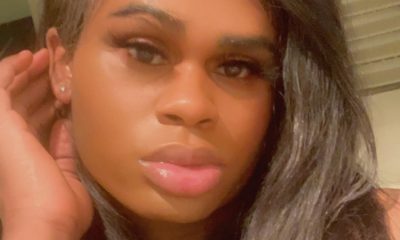
 District of Columbia2 days ago
District of Columbia2 days agoD.C. police seek public’s help in July 5 murder of trans woman



